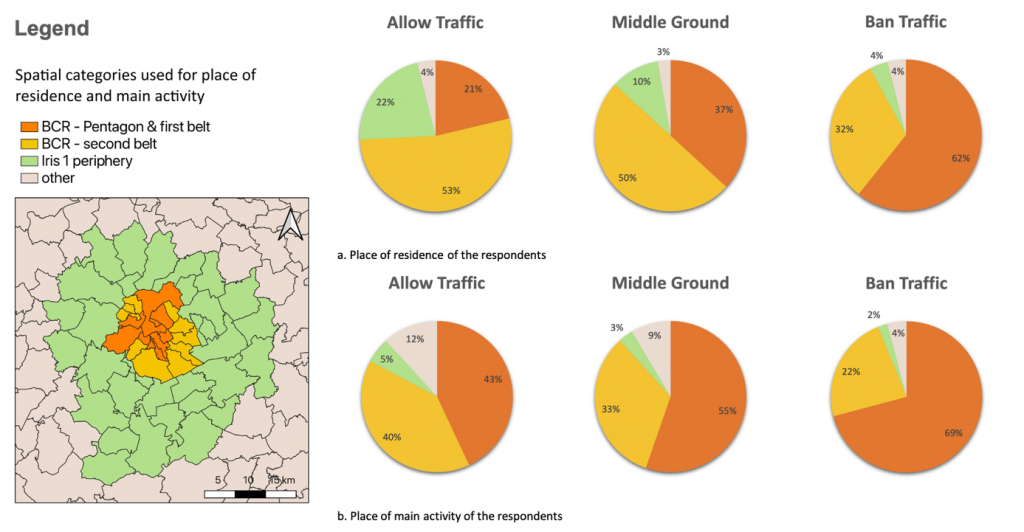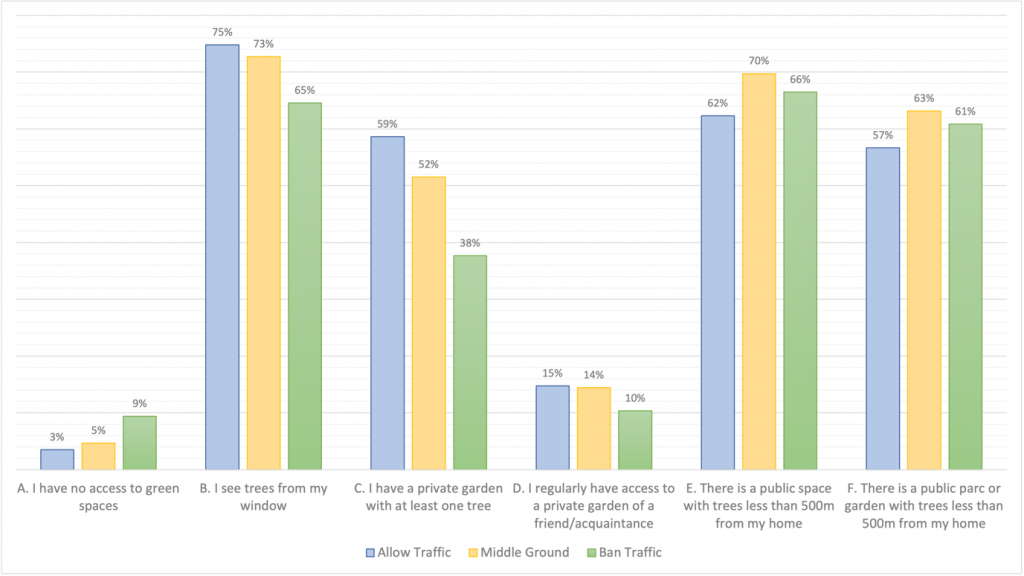
Leisure or motorised traffic in Brussels Central Park? Who wants what
About a year ago, I introduced in this blog Brussels’s Bois de la Cambre and the contention that was taking place to maintain or not motorised traffic through the park. In the post’s conclusion I was reflecting on the fact that, despite an apparent consensus on the importance of urban forests, in scarce urban land choices need to be made to arbitrate between mismatching priorities, ranging from providing space for leisure and the possibility to enjoy nature, to granting privileges to a country’s elites, or develop motorized mobility infrastructure.
A contested Urban Forest Based Solution
The situation in the Park has evolved since, including a heated public discussion, negotiations, citizen mobilisations for and against motorised traffic, new testing phases, and even a court case between two municipalities located around the park. To contribute to the debate, my colleagues Claire Pelgrims, Sebastiano Cincinnato, Anneloes Vandenbroucke and I launched an online survey, the results of which were published last month. The research did not intend to answer the question of what between opening or closing the park receives the most public support, not the least because we did not want to reduce it to a simple black or white question. Rather, we aimed to shed lights on the different sides of the dispute and the perspective of their advocates to support informed decision-making, a reason for which we also organised an online presentation for representative of the institutions and for the press.
What do the results tell us about urban forests?
In our analysis we illustrated how different preferences for the park setup are rooted in a broader context of natural and built infrastructures, social practices, and individual capabilities, and we scrutinised a set of variables related to socio-demographic questions, mobility practices, green spaces, residential geographies…. The report provides the detailed analysis of all of them, but three figures are particularly relevant here.
The importance of where people live
Figure 1 provides details on the places of residence and main activity (e.g. work, studies, …) of the three group that we considered in our analysis. Both sets of charts show a similar trend: those who want to completely or partially ban traffic from the park are more likely to live and work in the central areas of the agglomeration, typically more dense and urbanised. That socio-political attitudes are increasingly shaped by the urban/periurban divide is not new, nor is typical of urban forestry matters alone. At the same time, in the context of the CLEARING HOUSE, this comes as a useful reminder works to situate the forest -conceptually and politically – as part of ‘the urban’ and not as opposed to it.
Demand for more green spaces is related to a personal lack of access to green spaces
The second of the research’s figures that we propose here concerns respondents’ access to green spaces. Figure 2 shows that the call for reducing motorised traffic in the Bois de la Cambre is related to a relative lack of access to green spaces. Going from the Allow Traffic over the Middle Ground to the Ban Traffic group, we observe an increasing chance of respondents having no access to green spaces at all, a decreasing chance seeing trees from their window and access to a private garden (data on proximity to public green spaces shows a partially different picture, which we discussed in the report).
This result is important to call attention on matters of inequality and injustice that always characterise the geographies of the urban forest: increasing the provision of urban green spaces or changing their setup to privilege a recreative function is not simply a question of increasing urban liveability ‘in general’, it is can also be a form of compensation for those who are disadvantaged by agglomeration dynamics and of universal provision to address social inequalities.
The more one visits them, the more one wants them
While Figure 2 looked at the proximity to green spaces, Figure 3 focuses on the actual visit of green spaces. In particular, it shows that the desire to (partially) close the Bois de la Cambre to traffic goes hand in hand with the frequency with which one visits green spaces. While in all groups of our analysis, a large majority of respondents (85% or more) indicated to frequently visit green spaces, this share is largest in the Ban Traffic group, followed by the Middle Ground group, and then by the Allow Traffic group. This figure makes me optimist about the future of our urban forest, for it suggests a virtuous circle between use and demand. If we visit green spaces more often (and we are!), we will also demand for more and better green spaces, creating the momentum for ambitious action in our cities.
This blogpost is based on the report:
Nicola da Schio, Claire Pelgrims; Sebastiano Cincinnato; and Anneloes Vandenbroucke 2021, Between Green Spaces and Mobility: exploring diverging perspectives on the admission of motorised traffic in the Bois de la Cambre, a research report of the Brussels Studies Institute, http://doi.org/10.5281/zenodo.4879577
It can be downloaded at: https://bsi.brussels/research/research-report-between-green-spaces-and-mobility-exploring-diverging-perspectives-on-the-admission-of-motorised-traffic-in-the-bois-de-la-cambre/
Nicola da Schio is postdoctoral researcher at the Cosmopolis Centre for Urban Research of the Vrije Universiteit Brussel (VUB). On Twitter, he is @nicdas13



